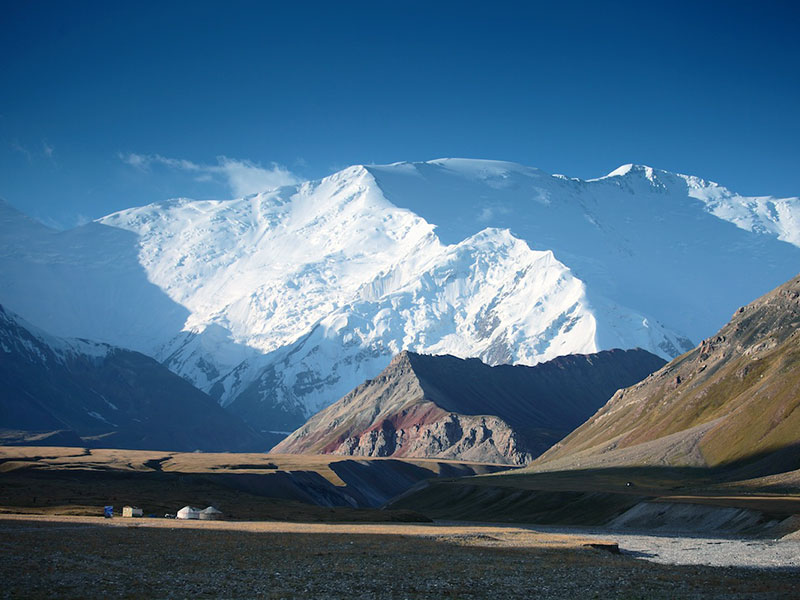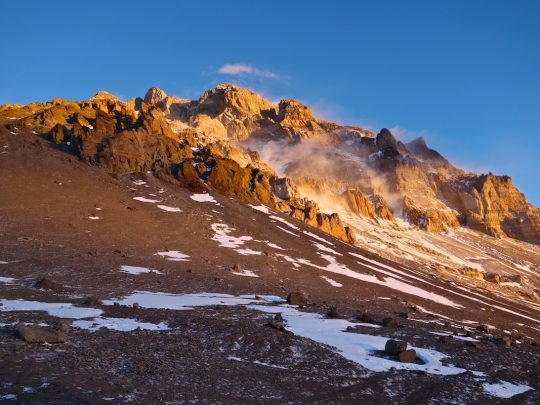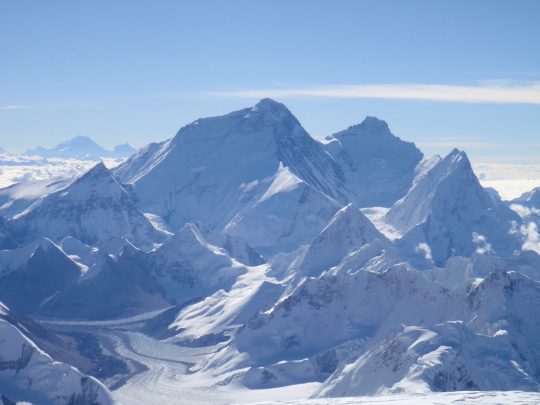- Guides
-
Climbs
-
Climb Elbrus
- Elbrus individually
- Elbrus from the South, 9 days
- Elbrus from the South, 7 days
- Elbrus from the South in 1 day
- Elbrus from the North
- Elbrus Two Summits
- Elbrus Traverse South to North
- Elbrus Traverse North to South
- Elbrus "Cross" from South
- Elbrus "Cross" from North
- Kazbek+Elbrus
- Elbrus from the West
- Elbrus by helicopter
- Elbrus holidays, 9 days
- Elbrus holidays, 7 days
- Elbrus by weekend
- Under 5000 m
- 5000+ meters
- 6000+ meters
- 7000+ meters
- 8000+ meters
-
Climb Elbrus
- Trekking
-
Adventures
- Tour to Morocco for New Year
- Morocco: Toubkal and the mysteries of the Sahara
- Peru: Ancient Inca culture
- Peru: Machu Picchu and Amazonia
- Brazil: Amazon
- Brazil: Pantanal, Iguassu, Rio
- Iran: Ancient Persia from Tehran to Isfahan
- Chile: from the Atacama to Tierra del Fuego
- Safari Tanzania
- Safari Kenya
- Safari Uganda
- Lycian way
- Bhutan, the Tour of Dragon Trails
- Useful
- About
Climb Lenin peak

- Height (m)
- 7135
- Duration
- 21 day
- Difficulty
- Moderate
- Continent
- Asia
- Children
- No
- Accomodation
- There are tents
3200 $
Почему такая цена?
Lenin Peak is one of the three easiest seven-thousands on the planet, but it is noticeably more famous and more accessible than the other two. Climbing Lenin Peak is popular in Russia and abroad, as it is included in the Snow Leopard program, along with Khan-Tengri Peak, Pobeda Peak, Korzhenevskaya Peak and Communism Peak. Lenin Peak is considered to be a good step on the way to easy eight-thousanders.
About the tour.
Climbing Lenin Peak is not technically difficult, except for a few crevasses on the route between the camps at 4400m and 5400m, which have to be crossed in roped parties. For this reason, Lenin Peak is considered the easiest and most accessible of the world’s 7000m peaks. However, this doesn’t mean that you should neglect proper preparation or overestimate yourself.
The main difference between climbing Lenin Peak and climbing lower peaks is the longer duration of the expedition, the accumulated psychological exhaustion and the drop in motivation. We will do everything we can to help you avoid these conditions by organising a comfortable base camp and providing varied and plentiful food. Our guides are professional climbers (not just words) with numerous ascents of 8000m peaks and years of experience in climbing and leading guided groups. They look after the welfare of all members of the group and will do everything possible to help you reach your goal, whilst maintaining a high level of safety. We don’t cut corners for our clients!
Previous experience of living above 5000m is an advantage.
Lenin peak.
Day 1. Flight to the city of Osh in Kyrgyzstan and meeting at the airport with our representatives. Dinner and instructing the group. Overnight at the hotel.
Day 2. Transfer to the intermediate camp Achik-Tash at an altitude of 3600m.
Day 3. Short acclimatisation hike.
Day 4. An 18km trek to the base camp at Lenin Peak (altitude 4400m) and setting up the camp.
Day 5. An acclimatisation trek.
Day 6. Ascent to Camp 1 (5400m) or trek to 5100m on a mountain near Base Camp. Overnight in one of these camps.
Day 7. Descent to Lenin Peak base camp (4400m), rest.
Day 8. Rest day.
Day 9. Ascent to camp 1 (5400m).
Day 10. Ascent to camp 2 (6100m).
Day 11. Descent to Lenin Peak’s base camp (4400m), rest.
Day 12. Rest day.
Day 13. Ascent to camp 1 (5400m).
Day 14. Ascent to camp 2 (6100m).
Day 15. Climbing Lenin Peak, with overnight stay at Camp 2 (6100m).
Day 16. Descend to Lenin Peak base camp (4400m) and rest.
Day 17. Reserved day.
Day 18. Reserved day.
Day 19. Reserved day.
Day 20. Descent to Achik-Tash camp and transfer to Osh.
Day 21. Transfer to the airport and flight back home.
The cost of Lenin Peak climb includes:
- Services of professional mountain guides – one for five or six climbers during the acclimatisation period and one for three climbers on the day of the Lenin Peak ascent.
- All transfers according to the itinerary.
- Hotel accommodation in Osh as mentioned in the itinerary.
- Accommodation in Achik-Tash and Base Camp in tents as mentioned in the itinerary.
- Breakfast in Osh.
- Breakfast, lunch and dinner on the way and in Achik-Tash (at 3600m) and Base Camp (at 4400m).
- Food for high altitude camps.
- Tents for high altitude camps.
- Gas for high altitude camps.
- First aid kits.
- Ropes.
- All guide instructions.
- All documents and permits required for climbing.
- Kitchen utensils except personal plates, cups and spoons.
- Horses to carry personal luggage (20kg per person).
Not included in the cost of Lenin Peak climb:
- Flight Tickets.
- Flight insurance.
- Flight tips.
- Carrier services.
- Alcohol.
- Anything else not mentioned in the itinerary.
- Any costs caused by the changing of the programs
Equipment.
Скачать PDFDocuments:
- Passport.
- Flight tickets.
- Medical insurance.
Personal equipment:
- Backpack. 70-80l.
- Sleeping bag, comfort temperature from -20C to -30C.
- Sleeping mattress.
- Trekking poles.
- Crampons.
- Ice axe.
- Harness.
- Carabiners – 3 pcs.
- Moustache insurance.
- Ice screw on separate karabiner.
- Cup-Spoon-Bowl.
- Ascender.
- 5 m. 5-6mm rep.
Clothes and shoes:
- Mountaineering double or triple boots. Double: plastic or leather. For plastics, we recommend Scarpa Vega – they seem to be the warmest of the double boots.
- Trekking boots.
- Waterproof layer – jacket + trousers. The industry offers a wide range of products, from simple 5000/5000 membranes to Gore-Tex products.
- Fleece suit.
- Thermal underwear layer – top and bottom.
- Thick and warm down coat.
- Thick gloves.
- Thin gloves.
- Bandana (in addition to protecting you from the sun in the valley, can be used to warm your neck or face in the cold).
- A cap.
- Warm trekking socks for the day of the climb.
Miscellaneous:
- LED headlamp.
- A pair of sunglasses.
- Ski goggles.
- 1L thermos. Preferably without a button on the lid.
- Windproof mask for the lower part of the face (can be partially replaced by a scarf).
- Gaiters.
- Sun block and lip balm.
- Chemical heaters (not essential, but can be very useful).
- Personal first aid kit.
- Elastic bandage and/or support bandage.
You may also like
-
 4,300 $
4,300 $Climb Aconcagua, 17 days
- Height (m)
- 6957
- Duration
- 17 days
- Difficulty
- Moderate
- Continent
- South America
- Children
- From 14 years old
- Accomodation
- There are tents
-
 6,000 $
6,000 $Climb Muztagh Ata